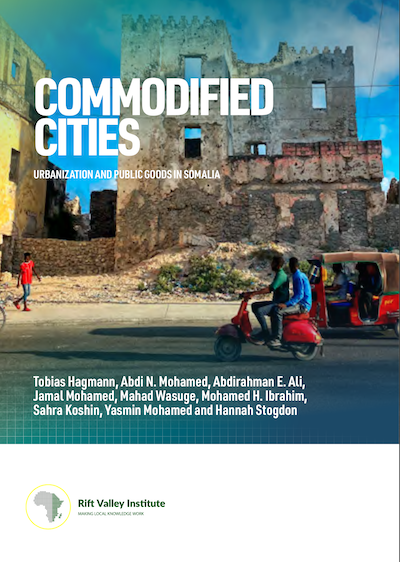Tobankii sano ee la soo dhaafay, horumarro la taaban karo ayaa laga sameeyay xaaladda siyaasadda Soomaaliya, oo ay kamid tahay dhismihii Dowladda Federaalka Soomaaliya ee sanadkii 2012 kadib markii la ansixiyay Dastuurka Federaalka Kumeelgaarka ah. Dowladaha xubnaha ka ah…
RVI publishes books, research reports, research papers, briefings and meeting reports in a range of formats. Publications cover policy, research, arts, culture and local knowledge in the countries of eastern and central Africa. Research publications—books, reports and papers—are peer-reviewed. Some RVI publications are also available in French and/or Arabic.
The RVI is a signatory of the Budapest Open Access Initiative (2001); all publications are free for download in PDF format under Creative Commons licences. The views expressed in books and reports published by the RVI are those of the authors, not the Institute.
SEARCH
PUBLICATION TYPE
LANGUAGE
REGION
COUNTRY
Over the past decade, significant progress has been made in Somalia’s post-conflict trajectory, including the formation of the Federal Government of Somalia (FGS) in 2012 following the endorsement of the Provisional Federal Constitution. Federal Member States (FMSs) were formed…
Urbanization in the Somali territories is transforming Somali society in multiple and profound ways, with the growth of urban centres and networks paralleled by new patterns of accumulation, investment, redistribution, inclusion and exclusion. While the perilous fragility of Somalia’s urban…
This policy brief seeks to analyse the progress and challenges of Puntland’s democratisation process and, in so doing, help Somali and international stakeholders maintain momentum towards credible and peaceful elections. The policy brief provides an overview of TPEC III…

- By Mustafe M. Abdi
- Download
This blog is the third in a series published by the Rift Valley Institute to help understand the causes of the drought-related crisis in the Somali regions of the Horn of Africa. It is a product of the UK government’s XCEPT…
Following Somalia’s economic recovery from the civil conflicts of the 1990s and 2000s, the khat trade has become a prominent source of tax revenue, particularly in Galkayo, an important regional hub for commerce between southern/central Somalia and the Port…

- By Ahmed M. Musa
- Download
This blog is the first in a series published by the Rift Valley Institute to help understand the causes of the drought-related crisis in the Somali regions of the Horn of Africa. It is a product of the UK government’s…
بدأت أهمية دول الخليج، ولا سيما السعودية، والإمارات، وقطر، في شؤون دول القرن الأفريقي تتزايد منذ عام 2015 تقريبًأ. كما عززت تركيا من وجودها في المنطقة منذ أن اتخذت خيارًا سياسيًا قبل ما يقرب من عقدين بـ”الانفتاح على…
Warbixintan waxa ay taxliilineysaa qaabka ragga da’da yar ee ku nool Hargeysa—caasimadda jamhuuriyadda madax-bannaanida ku dhawaaqday ee Soomaaliland—ay u isticmaalaan madallada baraha bulshada iyo kuwa dijitaalka ah si ay uga helaan fursado shaqo iyo kuwo dhaqaale, iyo sidoo…
Online and social media connectivity has increased rapidly across cities in the Horn of Africa, particularly amongst younger generations. Taking the post-conflict city of Hargeisa—capital of the de facto independent Republic of Somaliland—as its starting point, this report focuses…
Recent Publications

EWNET Writes: Writing Workshop Session I
December 18, 2025
The Ethiopian Women Researchers Network (EWNET) inaugural writing workshop series aims to not only provide women researchers with uninterrupted time for their scholarly projects, but also build a supportive academic community. The first session, entitled ‘EWNET Writes: Writing Workshop Session

SSC-Khaatumo: Perspectives on the significance and implications of its formation
December 12, 2025
On 15 April 2025, during a visit to the city of Las Anod in Sool, Prime Minister Hassan Abdi Barre officially declared the federal government’s recognition of SSC-Khaatumo (SSC-K hereafter) as a federal member state, marking an important milestone in

Aid and Conflict Sensitivity in Contemporary Ethiopia
November 17, 2025
This study assesses conflict sensitivity practices among humanitarian, development and peacebuilding (HDP) actors in Ethiopia. It seeks to raise awareness and foster a deeper understanding of the evolving aid landscape in the country while analysing the challenges that affect conflict-sensitive







